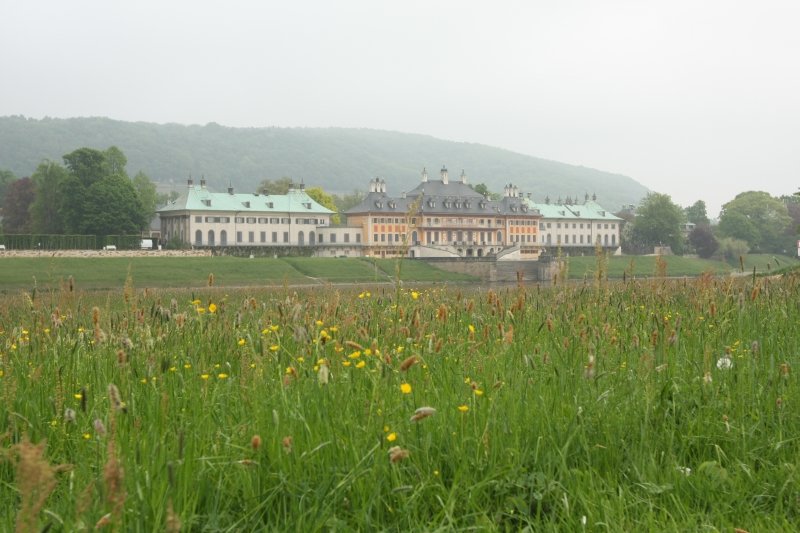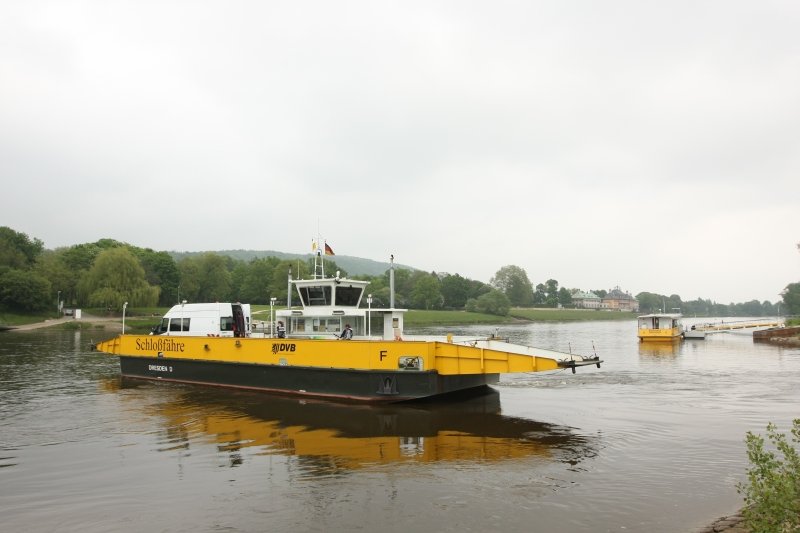Introducing Tulga Beyerle as the new Director of the Kunstgewerbemuseum Dresden, Hartwig Fischer, General Director of the executive Dresden State Art Collections, confidently predicts that with Tulga Beyerle they have "...someone who can help bring the museum into the 21st century."
We're not 100% certain if the good folk of Dresden are aware of the force with which they and their, until now, somewhat sleepy applied arts and crafts museum are about to be catapulted into the 21st century...... but it promises to be one hell of a ride.
Housed on the southern borders of Dresden in the rural splendour of Schloss Pillnitz, the Dresden Kunstgewerbemuseum was until now largely about the gardens and the picturesque location on the banks of the Elbe, and as institution belonged to that classic genre of applied arts and crafts museums: old objects on display in old rooms. Then in September 2013 came the unexpected, and almost surreal, announcement that Tulga Beyerle, co-founder of Vienna Design Week, one of the more experimental and theoretical European design weeks, would be taking over as Director. A genuinely radical departure for an institution that until now hasn't really held any proper special exhibitions far less been a location associated with inspiration and experimentation.
We suspect that will now change. Alone this year the Kunstgewerbemuseum Dresden have four special exhibitions planned; three in the summer months in Schloss Pillnitz and one over the winter in the Lipsiusbau in Dresden's historic old town.
A programme that not only represents a fundamental new beginning for the Kunstgewerbemuseum, but a very sporting curatorial challenge.
As we say, we're not sure if Dresden, or indeed Sachsen as a whole, is actually prepared.....

The first special exhibition in Schloss Pillnitz is "WerkStadt Vienna. Design Engaging the City", a touring exhibition curated by Vienna Design Week and which presents selected projects from the Vienna Design Week Passionswege programme, a programme which pairs young designers with traditional Viennese handwork businesses to develop a joint project; a joint project that in the best cases both parties benefit from. And a programme that regularly produces truly outstanding results.
In our "5 New Design Exhibitions for May 2014" post we wondered aloud in how far WerkStadt Vienna was "... a "Welcome gift" from Tulga Beyerle to her new employers, the new director presenting her credentials, a sort of museal Letters of Introduction, as it were." Listening to Tulga Beyerle at the unveiling of the 2014 season programme, we were on the right lines, "This exhibition", she explains, "contains a lot that is related to the way I work and a lot related to my understanding of how experimental design and traditional handicraft should work together"
And this combination of experimentation and tradition can also be found in the second special exhibition, "Trading Places. Designers meet the collection", due to open in June. For Trading Places Tulga Beyerle asked 5 young design studios to explore the Kunstgewerbemuseum's collection and then to develop a project based on a discourse and dialogue with objects of their choosing. Featuring mischer'traxler, Lorios & Livia, Dechem, Judith Seng and Daphna Laurens, Trading Places has all the promise of being a highly entertaining, informative, inventive and inspiring exhibition. We'll know for certain on June 20th.
In contrast the third special exhibition planned for Schloss Pillnitz this summer - Okolo Offline - doesn't mix traditional and contemporary. Or at least Okolo Offline One didn't. The Dresden exhibition is officially titled Okolo Offline Two, and will see the Kunstgewerbemuseum take the original exhibition as presented in Depot Basel, and extend it. Much as we enjoyed Okolo Offline, and much as we like Okolo's work, we were more than a little surprised to see it in the Kunstgewerbemuseum's 2014 programme. However, as Tulga Beyerle explains, the reason for its inclusion is very well considered, and lies some 140 kms upstream from Schloss Pillnitz, "One of the things that initially attracted me to the position here was the proximity of Poland and the Czech Republic, two countries I know very well from my work with Vienna Design Week and which I know have eclectic, lively design scenes. Through presenting such a dynamic and autonomous design studio as Okolo here in Dresden we have an echo back to Prague, which is something that is very important for me, and so with an exhibition such as Okolo Offline we can hopefully start to develop a network and to offer a platform for that network."
All of which means there is a very real chance that the former summer residence of Friedrich August I von Sachsen, and a playground of the Dresden Court of yore, could become the unofficial summer residence of the Central European Design glitterati and those who aspire to such. A development which opens up the truly delicious prospect of the Schloßfähre, the small ferry that brings visitors across the Elbe to Schloss Pillnitz, being full of hipsters all summer. A spectacle we would happily pay to watch. Day after day after day.....
In addition to the exhibitions during the summer season at Schloss Pillnitz, the Kunstgewerbemuseum will also organise a winter exhibition in Dresden itself - for conservatorial reasons the Kunstgewerbemuseum is only open from May til October, and until now that meant an enforced hibernation.
No more. A yet to be confirmed exhibition in the Lipsiusbau will not only help promote and maintain the museum over the winter months, but should - will ? - also remind Dresden that Schloss Pillnitz isn't just for lazy summer picnics, but that it houses an active, modern, design museum.

But first there is WerkStadt Vienna to be explored. As we never tire of repeating, the Passionswege programme at Vienna Design Week is without question one of our favourite design week programmes, and indeed one of the few truly innovative design week programmes anywhere, and is always worth exploring. Although we know all the projects currently on display in Dresden and have seen a version of the exhibition in Milan, viewing it in Dresden is a real joy as seeing the objects in the unashamedly lavish splendour of Schloss Pillnitz opens up a whole new perspective on familiar works. Philippe Malouin's monumental Time Elapsed, for example, has much more power and meaning in the wide open space of the Kunstgewerbemuseum than it had in the confines of J. & L. Lobmeyr's premises in Vienna, or Mark Brauns' Fortune carafes take on a whole new meaning amongst the museum's treasures: water genuinely becomes a luxury. Similarly Charlotte Talbot's Landscape tableware collection originally produced in co-operation with Wiener Silber Manufactur shines in a new found glory, and Matylda Krzykowski's horn brushes have never felt so far removed from the grease and honest toil of manual activity in Norbert Meier's Vienna workshop. While Julia Landsiedl's snow globes just seem to want to capture the Schloss and lock it away forever behind a blizzard of fake snow.
All of which is long way of saying, if you've never seen the Passionswege projects, WerkStadt Vienna in the Kunstgewerbemuseum Dresden is an excellent introduction. And if you have seen them before, you will learn to enjoy them in new ways.
For Tulga Beyerle the exhibition has another meaning, "This is my past", she says with more than a little, justifiable, pride, "the future is now all about the museum. And there's a lot to be done here."
The start is certainly more than promising.
WerkStadt Vienna. Design Engaging the City can be viewed at Kunstgewerbemuseum, Schloss Pillnitz, Dresden until August 27th.
Full(ish) details on the complete programme can be found at www.skd.museum The museums internet presence not quite being up to the same speed as the institution itself.
And our full interview with Tulga Beyerle is coming real soon.......